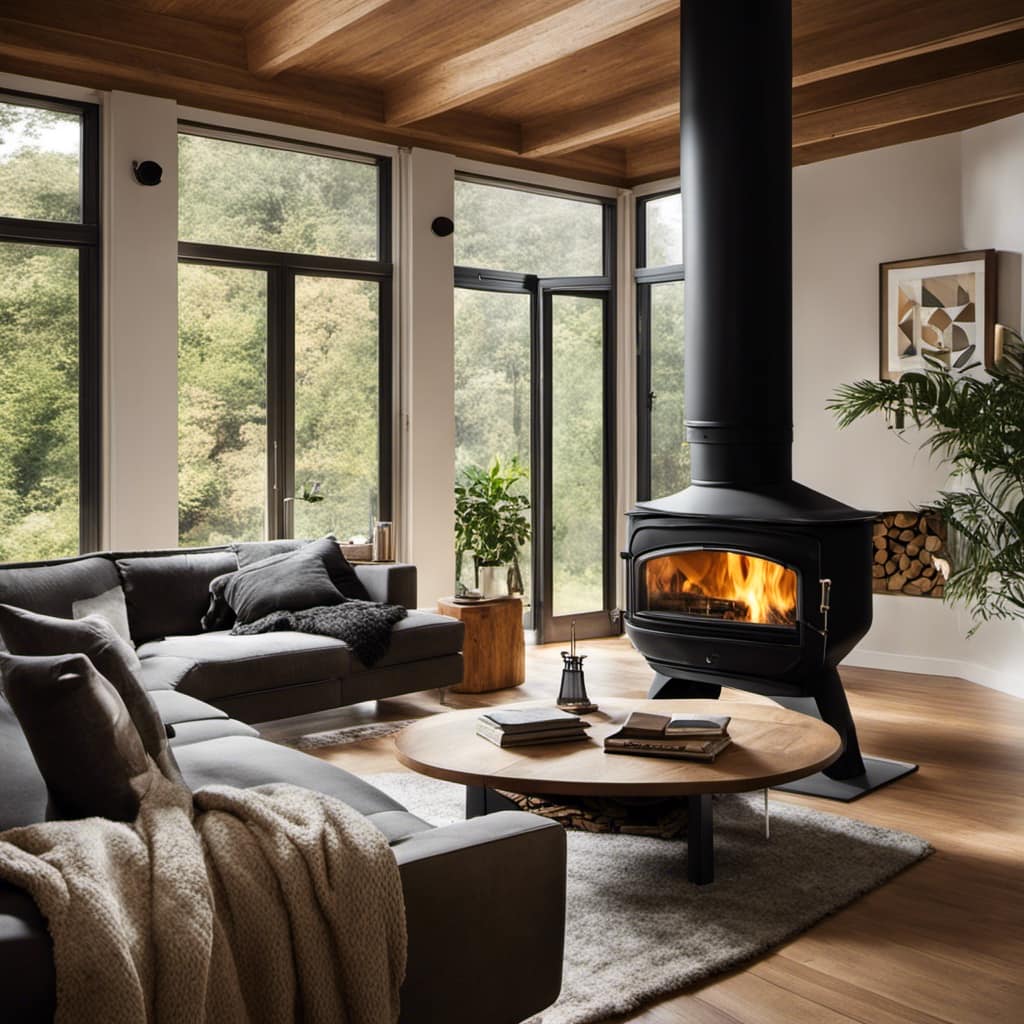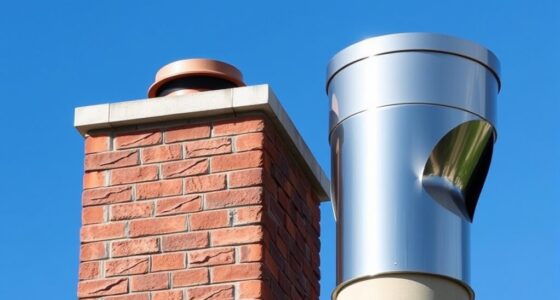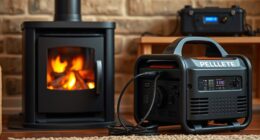I’ve always loved the cozy warmth and charming feel that a wood stove brings to my home. However, before you can enjoy the welcoming crackle and heat of the fire, there is a crucial step that must not be overlooked: getting a permit for its installation.
In this article, I’ll guide you through the process, sharing my firsthand knowledge and expertise. From understanding the permit requirements to following up on the approval process, I’ll help you navigate the necessary steps to make your wood stove dreams a reality.
Key Takeaways
- Research local building codes and regulations for wood stove installation permits.
- Gather necessary information and documents for the permit application.
- Fill out the application form accurately and completely.
- Regularly check the status of the permit approval with the local authorities.
Understanding Permit Requirements
I need to research the local building codes to understand the permit requirements for installing a wood stove.
The first step in the permit application process is to gather all the necessary information and documents. This includes filling out the application form, providing detailed plans and specifications of the wood stove installation, and submitting any supporting documents required by the local building department.
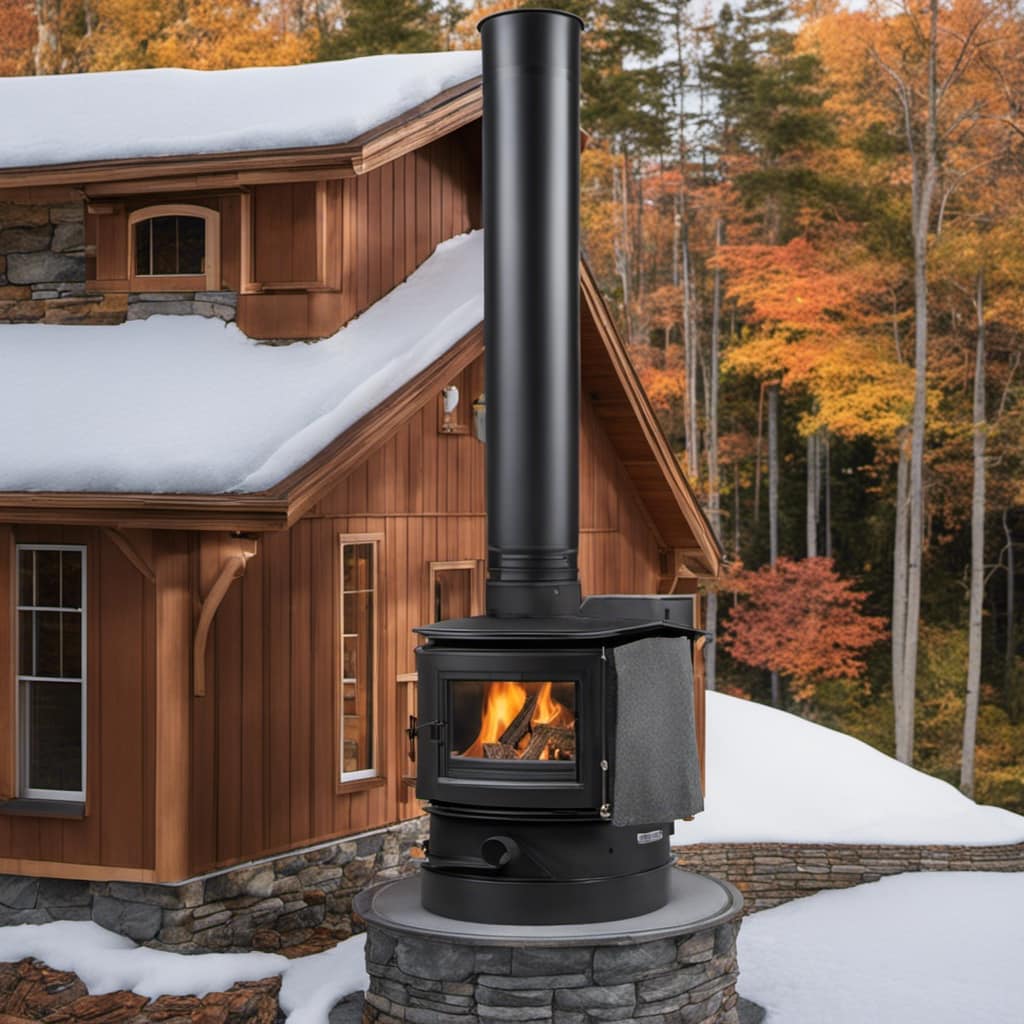
Once the application is complete, the next step is to submit it to the building department along with the permit fee payment. The permit fee payment is usually based on the cost of the wood stove installation and can vary depending on the jurisdiction.
It’s important to follow all the instructions provided by the building department to ensure a smooth permit application process.
Researching Local Regulations
There are several key factors to consider when researching local regulations for wood stove installation. It’s important to understand the rules and restrictions set by the local government and zoning authorities. Here are three important points to keep in mind:
Permit requirements: Check with the local government to determine if a permit is required for installing a wood stove. Some areas may have specific guidelines and procedures that need to be followed.
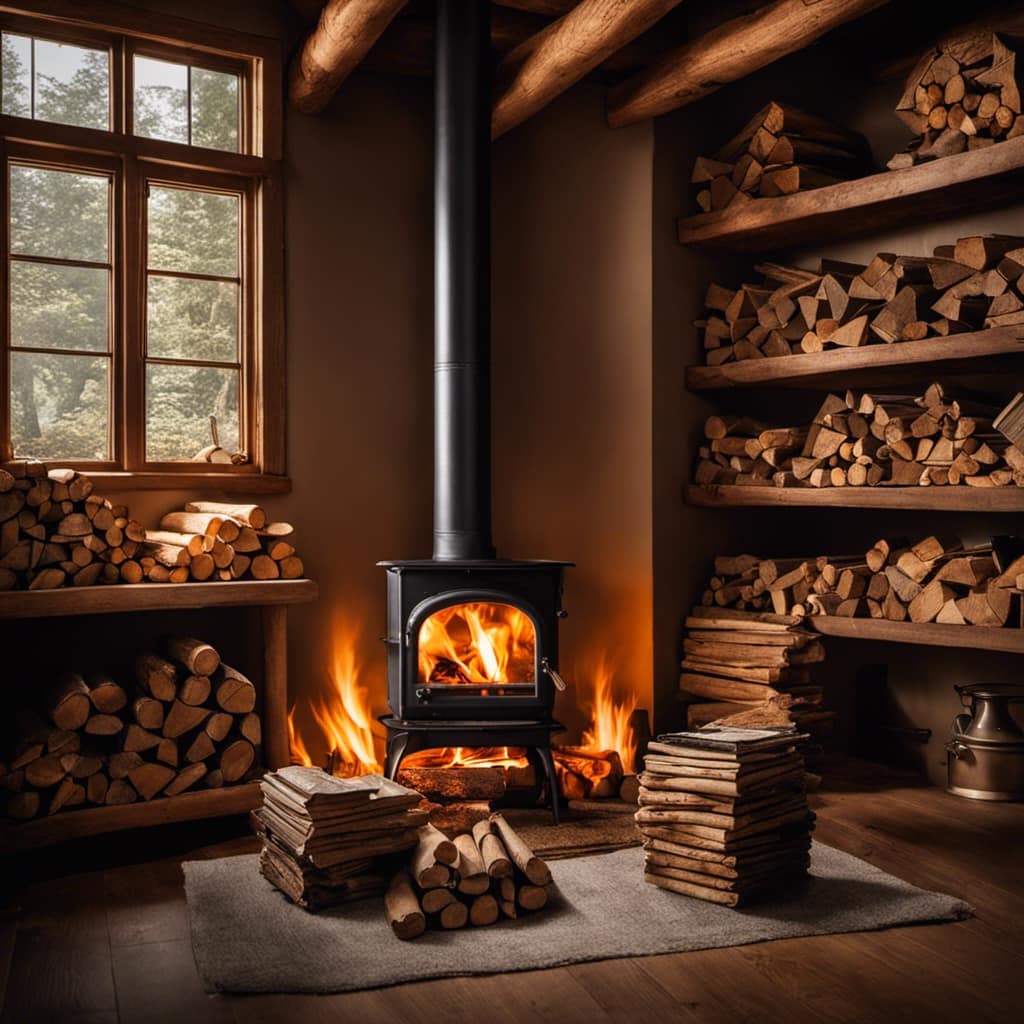
Zoning restrictions: Be aware of any zoning restrictions that may apply to your property. Certain areas may have limitations on the size, location, or type of wood stove that can be installed.
Clearance distances: Pay attention to the recommended clearance distances for wood stoves. These distances ensure proper ventilation and safety. It’s crucial to understand the minimum distance required from combustible materials such as walls, furniture, and other objects.
Gathering Required Documentation
To complete the permit application for the wood stove installation, I need to gather all the required documentation, such as proof of property ownership and detailed plans of the installation.
Document submission is a crucial step in the permit processing, as it ensures that all necessary information is provided to the authorities for review.
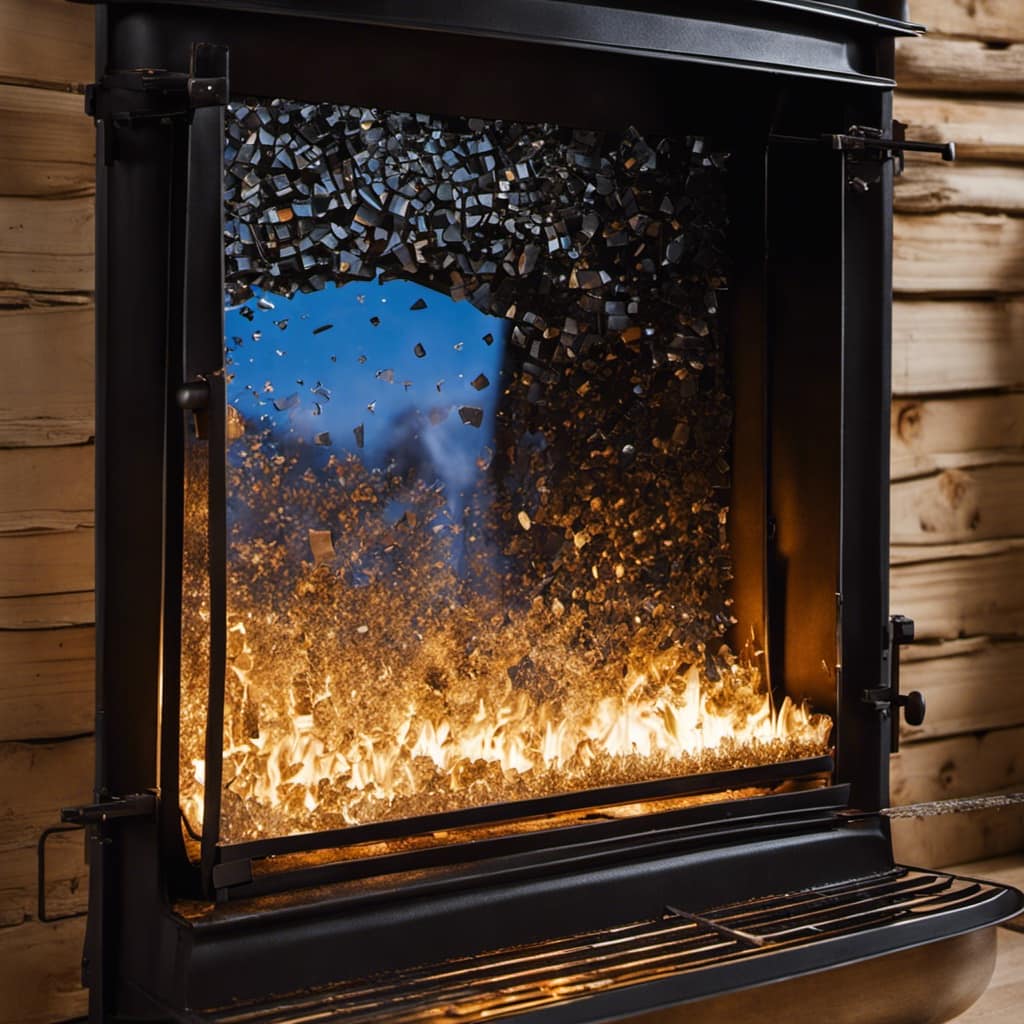
Proof of property ownership confirms that I’m the rightful owner of the property where the wood stove will be installed. This can be in the form of a property deed or a recent utility bill.
Detailed plans of the installation are essential to demonstrate that the wood stove will be installed safely and in compliance with local regulations. These plans should include dimensions, clearances, and specifications of the stove and chimney.
Submitting the Permit Application
After gathering all the required documentation, I’ll be submitting the permit application and eagerly awaiting the approval for my wood stove installation. The permit application process can sometimes be complex, but with the right knowledge and attention to detail, it can be successfully completed.
Here are three important steps to keep in mind during the permit application process:
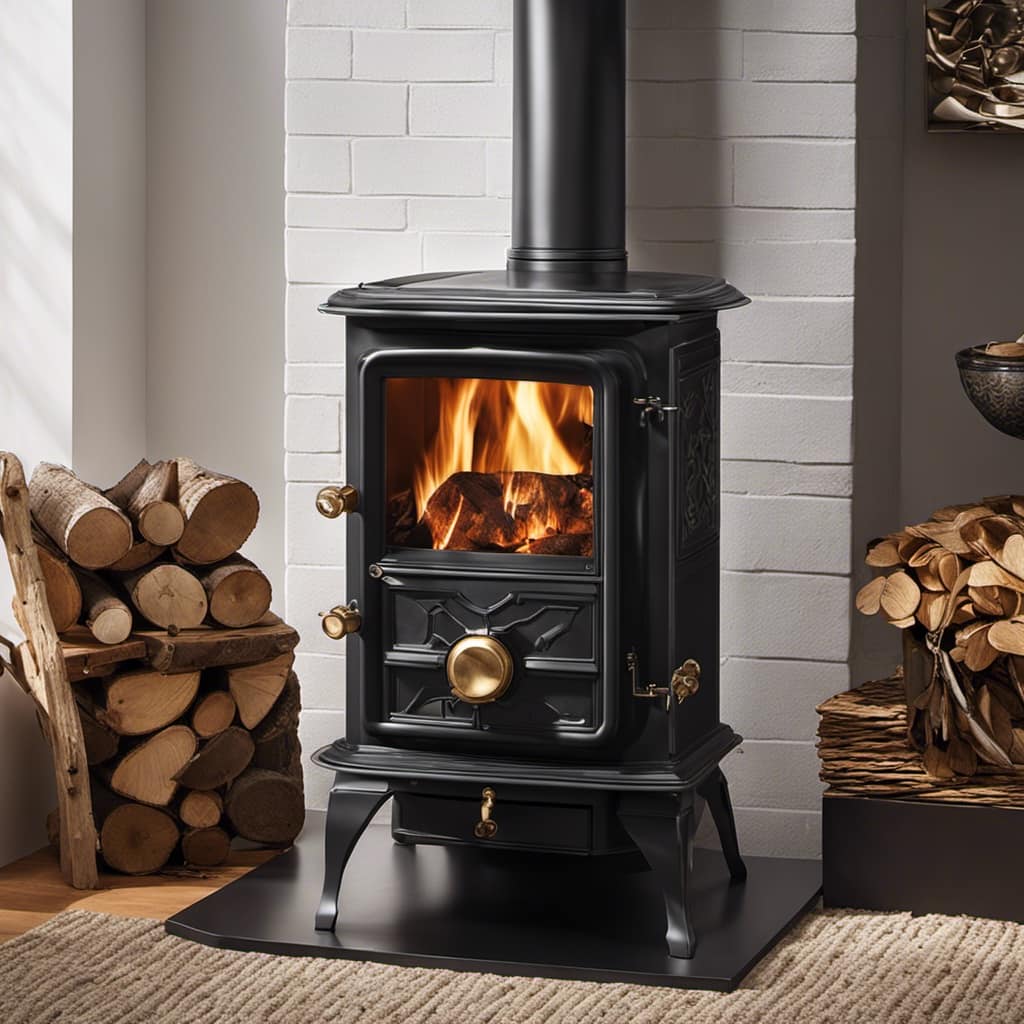
Fill out the application accurately: Ensure that all the required information is provided, including the specifications of the wood stove, installation plans, and any other supporting documents.
Pay the necessary fees: Make sure to include the payment for the permit application fees. Check with the local authorities for the accepted payment methods.
Submit the application on time: Be mindful of the deadline for submitting the application. Late submissions may cause delays in the approval process.
By following these steps, you can avoid common permit mistakes and increase your chances of a smooth approval process.
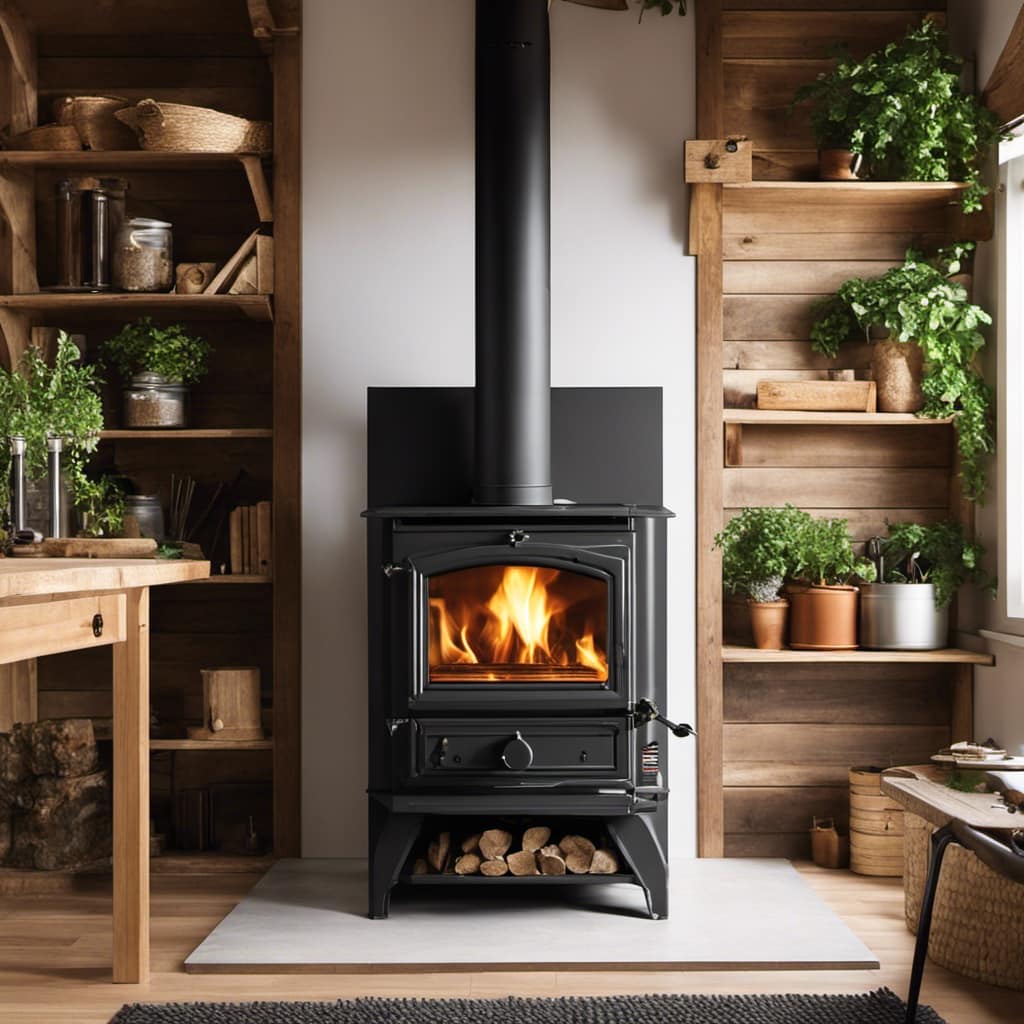
Now, let’s move on to the next step: following up on the permit approval process.
Is the Permit Process Different for Different Types of Wood Stove Installations?
Yes, the permit process can vary for different types of stove pipe installations. The type of wood stove, the location of the installation, and the type of chimney or stove pipe used can all affect the permit requirements. It’s important to understand the specific regulations for your particular installation.
Following Up on the Permit Approval Process
I’ll be calling the local authorities tomorrow to check on the status of my permit approval. It’s been a week since I submitted my application, and I’m eager to start the process of installing a wood stove in my home.
Tracking progress and troubleshooting any issues that may arise during the permit approval process is crucial to ensure a smooth and timely installation. I’ve been diligent in providing all the necessary documentation and meeting the requirements outlined by the local authorities.
However, delays or complications can occur, and it’s important to stay proactive. By following up regularly, I can address any potential issues promptly and ensure that my permit approval is processed efficiently.
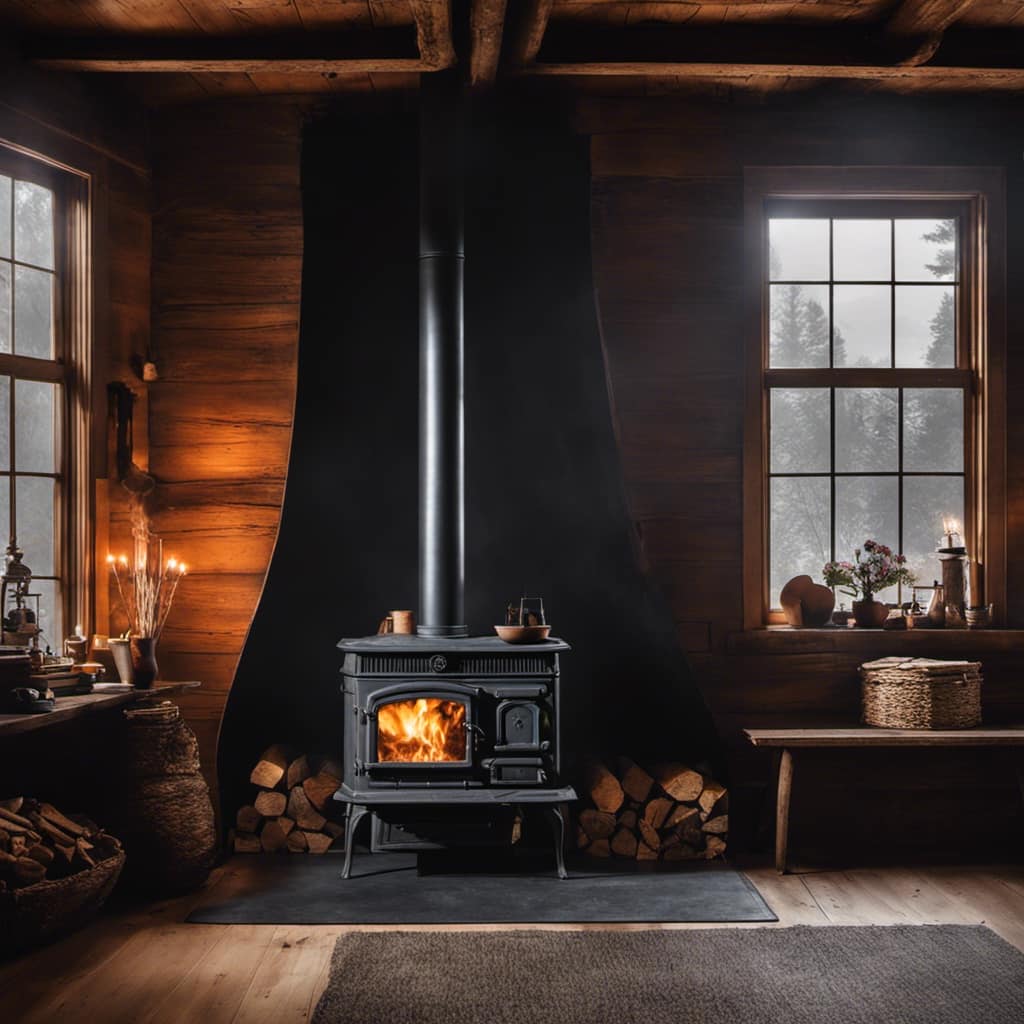
This way, I can move forward with my wood stove installation without any unnecessary delays.
Frequently Asked Questions
Can I Install a Wood Stove in a Rental Property?
Yes, you can install a wood stove in a rental property. However, there are legal requirements to consider. It’s crucial to check with local authorities to ensure compliance with regulations for installing wood stoves in apartments.
Are There Any Restrictions on the Type of Wood Stove I Can Install?
There are regulations for wood stove installations, including restrictions on the type of stove you can use. It’s important to consider wood stove emissions and choose a stove that meets the required standards.
Do I Need a Separate Permit for Chimney Installation?
Yes, I need a separate permit for chimney installation. The cost of chimney installation can vary depending on the materials used. It’s important to choose the best materials to ensure a safe and efficient chimney system.
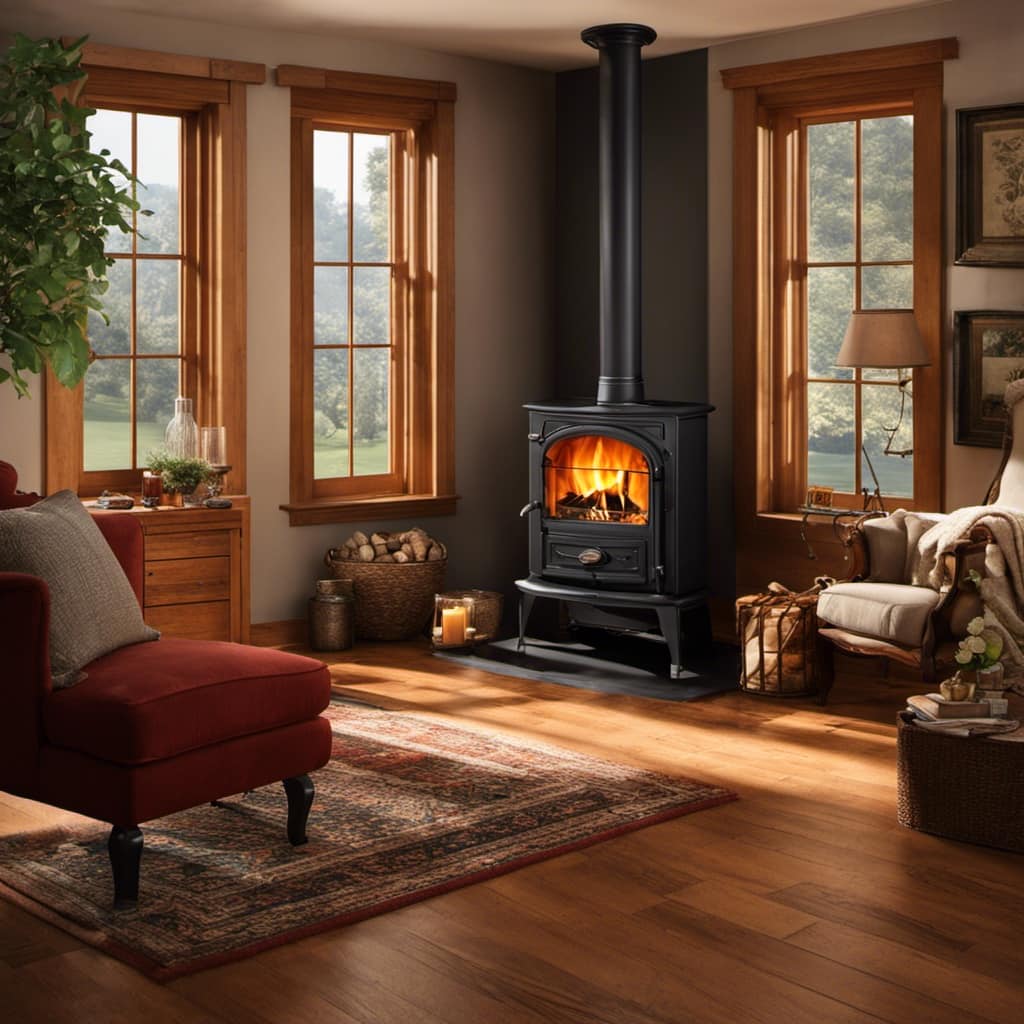
Are There Any Specific Safety Measures I Need to Follow During Wood Stove Installation?
When it comes to wood stove installation, safety precautions are crucial. It’s important to follow proper installation techniques to ensure a secure and efficient setup.
What Is the Typical Timeframe for Receiving a Permit Approval for Wood Stove Installation?
Typically, the timeframe for receiving a permit approval for wood stove installation depends on the local building department. They may require specific safety measures and documents like a detailed installation plan and proof of compliance with building codes.
Conclusion
So there you have it, folks! Getting a permit for wood stove installation may seem like a daunting task, but with a little research and preparation, it can be a breeze.
Remember to understand your local regulations, gather all the necessary documentation, and submit your application promptly.
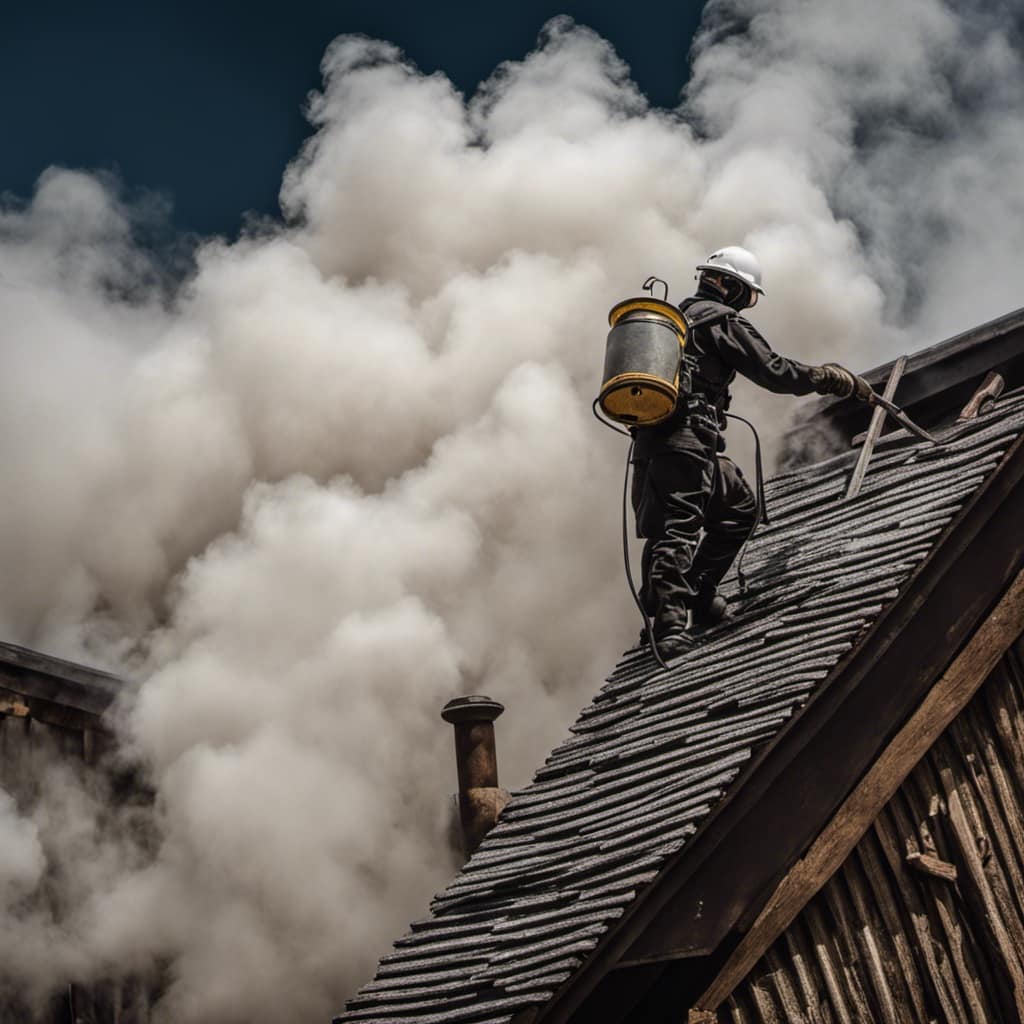
And just like a warm fire on a cold winter’s night, obtaining a permit can bring you peace of mind and enjoyment for years to come.
Happy stove installation!
Growing up surrounded by the vast beauty of nature, Sierra was always drawn to the call of the wild. While others sought the comfort of the familiar, she ventured out, embracing the unpredictable and finding stories in the heartbeat of nature.
At the epicenter of every remarkable venture lies a dynamic team—a fusion of diverse talents, visions, and passions. The essence of Best Small Wood Stoves is crafted and refined by such a trio: Sierra, Logan, and Terra. Their collective expertise has transformed the platform into a leading authority on small wood stoves, radiating warmth and knowledge in equal measure.

